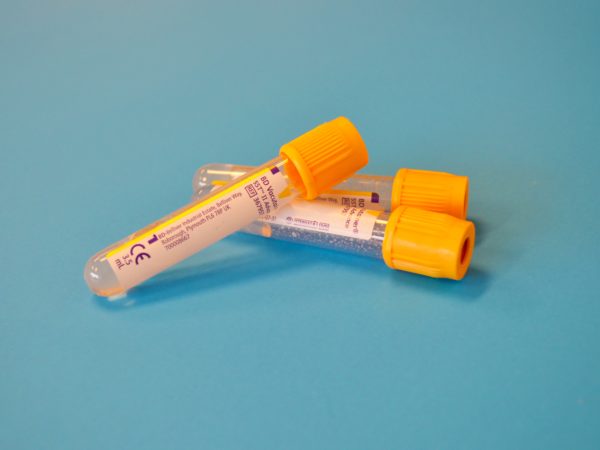A Deakin-led ARC Industrial Transformation Research Hub will develop new technologies to improve life for the elderly.
Australia’s growing population of people over 65 may find the challenges of ageing easier to deal with in future, thanks to a new ARC Research Hub for Digital Enhanced Living.
Led by Deakin University’s Pro Vice-Chancellor ICT Innovation and Translation Professor John Grundy and ARC Laureate Professor Svetha Venkatesh, the Hub’s multi-disciplinary team of researchers, partner organisations and industry collaborators will adapt and build personalised technologies to support the wellbeing of elderly people living at home or in residential aged care.
[testimonial_text]The rapid growth in our ageing population is a major emerging societal challenge in Australia and around the world. As people live longer, the need to provide aged-care facilities and in-home support increases, but existing facilities and resources can’t keep up with this increasing demand for care and support. The Hub for Digital Enhanced Living will address the need for effective, affordable, scalable and safe in-home and in-residential care solutions that use current and emerging sensor, interaction and integration technologies – a ‘smart home’ focused assisted living.[/testimonial_text]
[testimonial_picture name=”Professor John Grundy” details=”Pro Vice-Chancellor ICT Innovation and Translation”]
 [/testimonial_picture]
[/testimonial_picture]It is hoped the Hub will create a new research and development ecosystem for digital enhanced living to deploy new and repurposed devices, analytics and integration platforms to improve care of the aged.
The Hub is Deakin’s second ARC Industrial Transformation Research Hub and one of only three awarded nationwide in the latest round of ARC funding in June.
It involves 12 partner industry collaborators, and four Australian and six international universities.
Researchers at the Hub, including 11 from Deakin, are drawn from a diverse range of disciplines such as nursing, aged care, palliative care, health informatics, sport and exercise science, human computer interaction, pattern recognition and data analysis and software engineering.
“We hope that our work will eventually form part of a larger health delivery system so the wide range of expertise in the team is essential,” Professor Grundy explained.
“Our international partners are invaluable for our understanding of best practice internationally, their leading expertise, and the sharing of ideas that others are already trialling.”
Professor Grundy said the aim of the Hub was to improve people’s quality of life as they aged, through the use of appropriate and affordable technology that would also assist carers, family and friends in caring for them.
One well-known example of wellbeing monitoring through technology is fall detection, but Professor Grundy said this could be extended to technology that “learns” a person’s normal pattern of behaviour and detects changes that could indicate help is needed.
“We also have a great interest in the mental health and community connectedness of people who are ageing,” he added.
“We call it the ‘conversational agent’, where technology is used to start a dialogue with the aging person. It could be existing smart home technology asking, ‘are you Ok?’ or facilitating connections with family members by letting the person know their grandchild is online and ready to chat.
“It might also extend behavioural monitoring to remind the person to take their medication or stay hydrated.”
As well as developing new technology, the Hub will focus on augmenting the use of existing smart technologies to support people as they age, such as iPads, mobile phones, computers and smart televisions.
“We’re not investigating expensive assistive technology; our solutions need to be cost-effective for providers and users,” Professor Grundy said.
As part of ensuring this, an important aspect of the Hub is its emphasis on consultation with end users, including the ageing person, their family and carers and aged care providers.
“The solutions we trial in terms of technology innovations won’t come from researchers pulling them out of thin air,” Professor Grundy explained.
“I expect some really great ideas are going to come from the aged themselves, from their families and from experienced workers in the industry in different roles.”
This “living lab” approach will help the Hub’s researchers develop a solid understanding of what end users need and want from “enhanced digital living” and what will and won’t work for each individual in order to develop fit for purpose solutions.
“Every person’s aging process is different, as are their medical and life histories and homes. There is no one size fits all; there is not even several sizes fits all. The individual needs to be in charge of the process, so the solution might be something quite simple or something quite sophisticated,” Professor Grundy said.
“Using digital technology to support people as they age is not a new idea, but until we managed to get a group of like-minded researchers, companies and care organisations together it couldn’t really be addressed as an intricate whole,” he added.
“We need this multidisciplinary, multi- organisational group to investigate problems that we couldn’t tackle as individuals or small groups.
“In this regard, the Hub will provide opportunities for more than 20 junior researchers to join our team of experts. Positions for research associates, research engineers, PhD and masters students, interns and capstone project students will be created, allowing new researchers to benefit from the existing expertise and, in turn, contribute their innovative ideas and research findings to the Hub.”
Published by Deakin Research 21 July 2017



